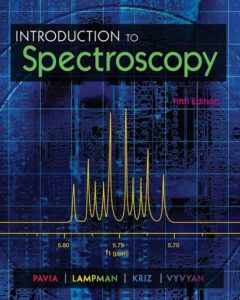Back to: Organic Chemistry 100 Level
Welcome to class!
Hello, bright mind! It’s always a pleasure having you here. You’ve been doing a fantastic job learning Organic Chemistry, and today, we’re taking a little peek into a fascinating topic called Spectroscopy. Some schools treat it as optional, but don’t worry—we’ll break it down in a way that feels like gist. Ready? Let’s get into it.
Introduction To Spectroscopy (Optional For Some Schools)
What is Spectroscopy?
Spectroscopy is a method scientists use to study the structure of molecules by looking at how those molecules interact with light or other forms of energy. Just like a doctor uses a stethoscope to listen to your heartbeat, chemists use spectroscopy to “listen” to what atoms and molecules are doing.

Imagine you’re in a dark room, and someone shines a coloured light at a piece of cloth. Depending on how the cloth absorbs or reflects the light, you can tell something about its material. That’s the idea behind spectroscopy!
Why Is Spectroscopy Important in Organic Chemistry?
Organic compounds are made of atoms bonded in specific ways. Spectroscopy helps us:
Identify unknown compounds
Confirm the structure of molecules we create in the lab
Understand how atoms are connected in a compound
Determine purity of a sample (Is it clean or mixed with others?)
Instead of guessing, scientists can now say, “Yes, this compound has an -OH group” or “This molecule has a double bond”—all by reading its “light response.”
Types of Spectroscopy (Just the basics)
Here are a few simple types you might hear about:

1. Infrared (IR) Spectroscopy
This method tells us about the types of bonds in a molecule.
For example, alcohols (like ethanol) show a clear O–H stretch in the IR spectrum.
It’s like listening for the “voice” of a specific bond.
2. Nuclear Magnetic Resonance (NMR) Spectroscopy
This one focuses on hydrogen atoms (or carbon atoms) in a compound.
It helps show where the atoms are and how they’re arranged.
Think of it as a map of where everyone is sitting in a compound.
3. Ultraviolet-Visible (UV-Vis) Spectroscopy
Used to study compounds that absorb UV or visible light.
Often used in coloured compounds, like dyes or some plant extracts.
Helps in understanding conjugated systems (those with alternating double bonds).
Real-Life Uses of Spectroscopy
In pharmacies, it helps verify that a drug is genuine.
In food labs, it checks for harmful chemicals in food and drinks.

In forensics, it’s used to identify unknown substances at a crime scene.
In research, scientists use it to discover new medicines, plastics, and materials.
Summary
- Spectroscopy is a method that uses light or energy to study molecules.
- It helps determine structure, purity, and bonding in organic compounds.
- Common types include IR, NMR, and UV-Vis spectroscopy.
- It’s widely used in medicine, research, food, and environmental analysis.
Evaluation
- What is the basic idea of spectroscopy?
- Mention one reason why spectroscopy is useful in organic chemistry.
- What type of spectroscopy tells us about bonds in a molecule?
- Which spectroscopy shows how hydrogen atoms are arranged?
- Give one real-life example of where spectroscopy is used.
You’re doing absolutely amazing! Even though this topic is optional for some schools, you’ve taken the bold step to understand it—and that’s how excellence begins. Keep going strong, and remember: at Afrilearn, we’re proud to grow with you every step of the way. On to the next class, champ!
